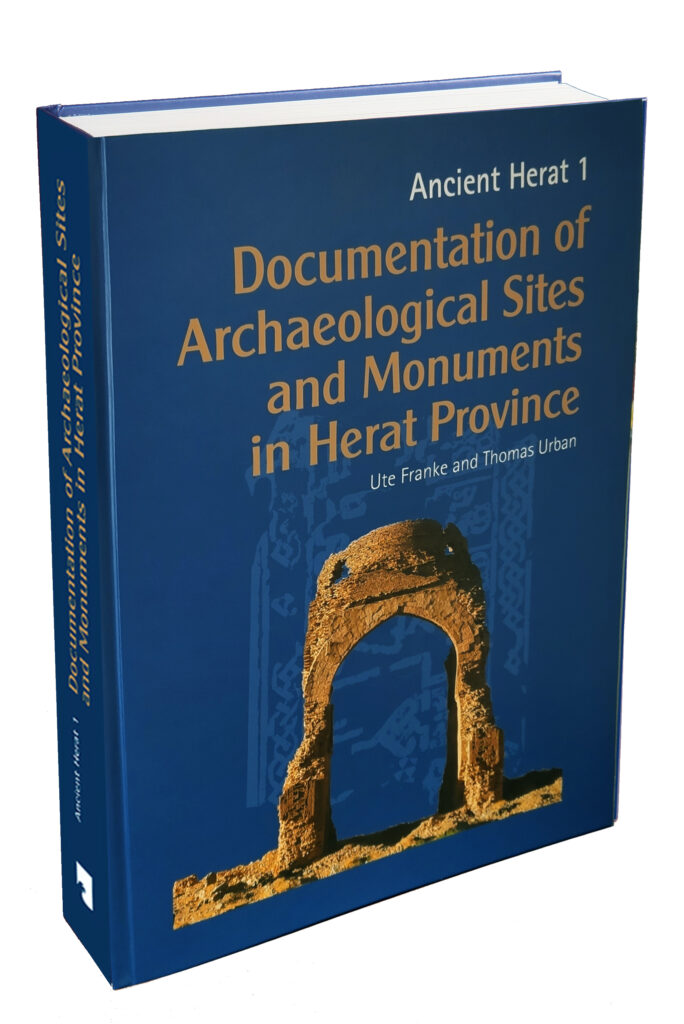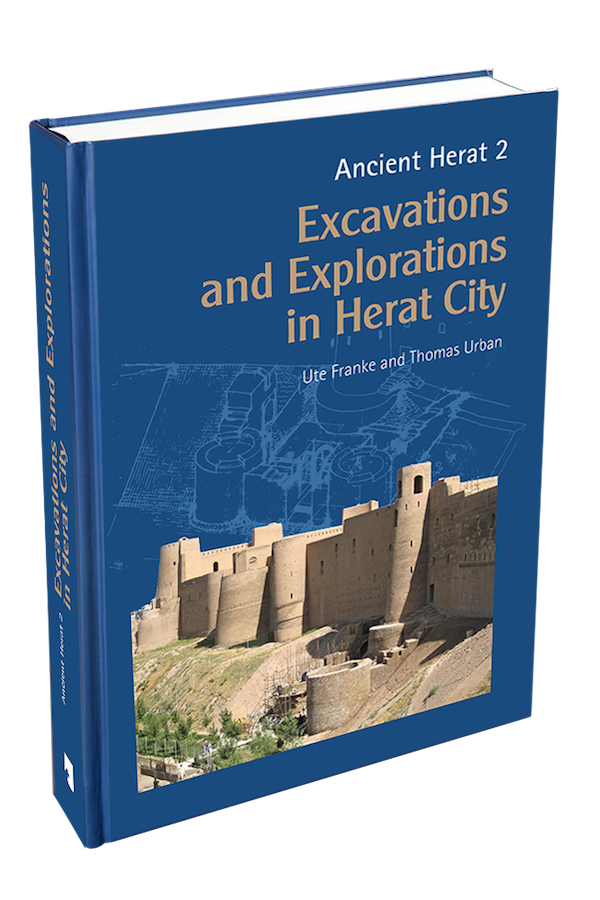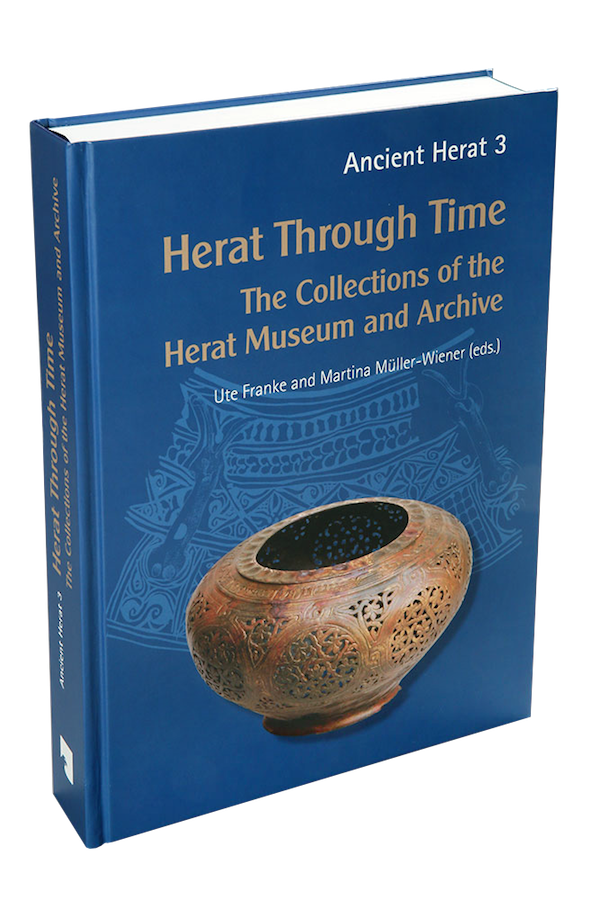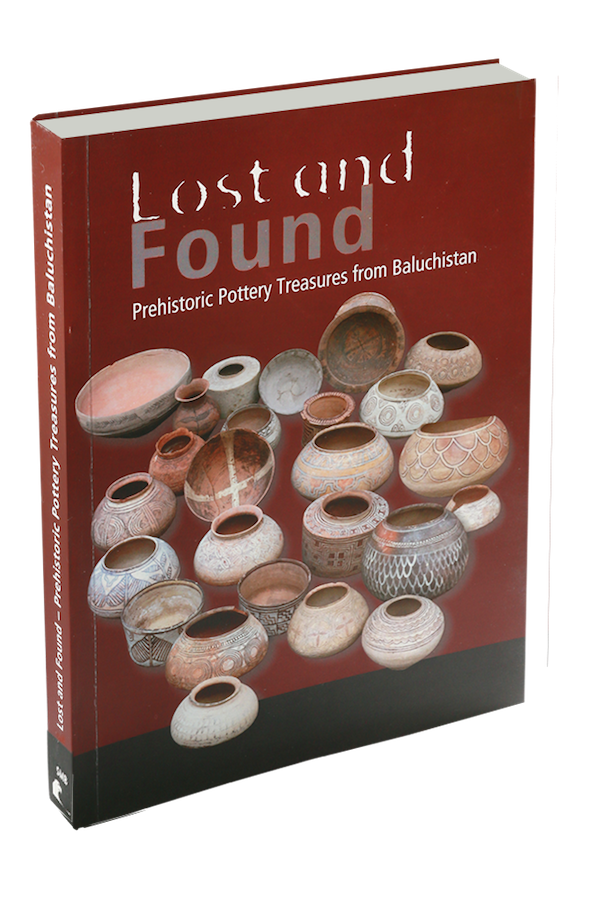ANCIENT HERAT SERIES
The ‘Ancient Herat’ Project was developed during the final phase of the Bagh-e Babur excavations in Kabul in discussions between the German-Afghan Archaeological Mission in Afghanistan and its partners. It began in 2004 under the auspices of the Eurasia Department of the German Archaeological Institute in Berlin and continued from 2009 to 2012 in collaboration with the Museum of Islamic Art of the National Museums Berlin.
The project, funded by the German Federal Foreign Office’s Department for Cultural Preservation, ultimately comprised three major interrelated and complementary components: the documentation of archaeological sites and monuments in Herat Province (2004-2007; vol. 1), archaeological excavations and explorations in the city of Herat (2005-2009; vol. 2), and the redesigning of the Herat Museum together with the documentation and conservation of its collections (2008-2012).
The three lavishly illustrated volumes in the series highlight the cultural heritage of the city of Herat and its hinterland, and place the archaeological finds in a wider context. ‘Excerpts’ provided for each book give an insight into the content and character of the volumes.
Ancient Herat 1
Documentation of Archaeological Sites and Monuments in Herat Province
by Ute Franke and Thomas Urban
with contributions by Claus-Peter Haase, Daniel Knitter, Jonathan Lee and Bernard O’Kane
This final book of the Ancient Herat series presents the results of a field reconnaissance undertaken between 2004 and 2006 to document archaeological sites and historical monuments. The survey, which was based on maps, aerial photographs and interviews, covered parts of 13 of the 16 districts of Herat Province; over 4000 km were covered on foot and by car. Many of the 354 sites were previously unknown, others no longer exist.
Since visual information is of crucial importance, we have decided to present the largest possible amount of available data in this volume as well, wherever possible. Therefore, the regional material culture, mainly pottery in addition to the buildings, is presented here for the first time in a comprehensive form and placed in a spatial context. Despite the difficult conditions, distribution patterns of buildings and settlements can be discerned, which allow conclusions on the land use from the late 3rd millennium BC to the 19th century. Thus, for the first time, the city of Herat can be considered in the context of a hinterland.
Ancient Herat 2
Excavations and Explorations in Herat City
by Ute Franke and Thomas Urban
with contributions by Warwick Ball, Benjamin Mutin, Cécile Buquet-Marcon, Stephanie Langer (†), Roland Besenval (†), Nader Rassuli and Ajmal Ayomuddin (2017)
This book is the second in a series of three volumes presenting the results of the German-Afghan Archaeological Mission to Herat. The Old City Project started in 2005 and concluded in September 2009, when the restored Timurid gateway was handed over to the Afghan government. The work on the citadel was supplemented by explorations in Kuhandaz and minor investigations in the city of Herat proper. It was conducted 2005 and 2008 in collaboration with the Délégation Archéologique Française en Afghanistan (DAFA); the conservation of the gateway was carried out in close cooperation with the Aga Khan Trust for Culture.
This work unfolded archaeological remains from the 1st millennium BCE to the 19th century. Notwithstanding stratigraphic gaps in the cultural sequence substantial evidence on the material culture and chronological developments through these 2500 years was obtained. For the first time, Iron Age and Achaemenid settlement traces were discovered as well as objects from the 10th-15th-centuries, a Timurid gateway to the citadel and 16th-19th century remains, opening new perspectives on Ancient Herat and its urban topography.
Ancient Herat 3
Herat Through Time – The Collections of the Herat Museum and Archive
edited by Ute Franke and Martina Mueller-Wiener (2016)
This book is the outcome of research conducted between 2008 and 2012 in the Herat Museum in the frame of the German-Afghan Archaeological Research Projects. Initially, work focussed on the documentation and conservation of the objects, conducted in conjunction with long-term training of staff from Herat and Kabul. When the refurbishment of the citadel by the Aga Khan Trust for Culture provided a chance to install a full-fledged museum with spacious exhibition halls, depots and a laboratory the project grasped the opportunity, supported by the Afghan and German cooperation partners and the German Foreign Office as funding agency.
The exhibition halls opened in October 2011 as the first newly established provincial museum in Afghanistan with 450 objects on display, illustrating 4500 years of history. Since then, the museum has attracted many visitors to get into touch with their past, showcased in a historic ambiance and transmitted by educational material and booklets.
The richly illustrated catalogue provides detailed descriptions of more than 800 objects. Presented in a chronological order, they are placed in a broader cultural and historic context in essays written by various scholars.
Other titles
Lost and Found
Prehistoric Pottery Treasures from Baluchistan (Pakistan)
edited by Ute Franke and Elisa Cortesi with contributions by Aurore Didier, Benjamin Mutin, Sharmila Faruqui, Rainer Schmiedchen, Muhammad Shah Bukhari, Ehjaz Elahi and Taimur Mirza (photographs).
Since the early days of research some 100 years ago, Baluchistan´s cultural heritage is known for its high quality craftsmanship and beauty. Intricate geometric patterns on clay vessels, highlighted in different colours, betray an intense aesthetic sense, hybrid creatures and magic animals allow glimpses into a world of phantasy and imagination. Unfortunately, this appeal has created an economic value, reflected by the sheer amount of vessels from illegal excavations in Baluchistan on the art market.
The outstanding collection of 804 ceramic vessels and 15 stone objects retrieved in 2005 by the Pakistani customs in the port of Karachi and saved by the government from disappearing on the international art market provides but a faint idea of what is buried in the soils of Baluchistan – and of what must already have been lost. Their provenance is mostly central and southern Baluchistan, in date they range from c. 3500 to 400 BCE. The German-Pakistani Archaeological Mission to Kalat was invited 2012 by the Department of Archaeology and Museums and the Ministry for Culture and Tourism Sindh to document and restore the objects in the National Museum of Pakistan in Karachi.
This book was published on the occasion of an exhibition opened in November 2015 in the National Museum. It is not only an exhibition catalogue presenting 820 objects in great detail. Lavishly illustrated texts provide insights into this remote region, its archaeological exploration and the major sites, placing this rich cultural heritage into the wider context of the Indo-Iranian borderlands and the Indus Valley Civilization.
The project was carried out in close collaboration with the Ministry for Culture and Tourism and the National Museum. It received generous financial support from the Cultural Preservation Program of the German Federal Foreign Office and the German Consulate in Karachi.
28 x 21.7, 400 pp, paperback, more than 1800 illustrations in colour, ISBN 978-3-00-051309-1




